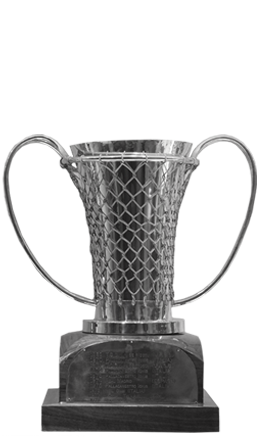
1971-1980
1971-1980
Real Madrid’s dominance on the domestic and international stages continued into the seventies. First with Pedro Ferrándiz in charge, and then with his successor on the bench, Lolo Sainz, the Whites tasted success season after season. Another three European Championship Cups made the team from the Spanish capital the most decorated club on the continent.

Real Madrid cemented its dominance over Spanish basketball throughout the seventies. Changes to the squad didn’t seem to affect the results. While Sevillano, Emiliano and Luyk all eventually retired, there were always other great players coming in to pick up the baton.
The same was true of the team’s management. After winning the National League and the Copa de España in 1975, Pedro Ferrandiz became a sporting director and appointed a successor, Lolo Sainz, who had been his assistant up until that point. The team’s winning mentality continued with the former Madrid point guard at the helm. Sainz remained in office until the end of the 1988-89 season.
An unstoppable cycle
While the sixties was a successful decade, the seventies were not far behind. Between 1970 and 1975, Real Madrid won each edition of the National League and the Spanish Cup. Between 1972 and 194 they went 88 games unbeaten in the league. In order to be able to keep this level of play up, the side needed a consistent flow of good players to replace those who left and retired (Emiliano, in 1973). Not only new Americans, but also local talent sourced from the academy, such as Rafa Rullán and Carmelo Cabrera. In 1971, a point guard with a big personality came through in Juan Antonio Corbalán. In the final minutes of the European Cup final in 1974, when Cabrera was sin binned for fouling, Ferrándiz put his confidence in the brash 19 year-old. Madrid won and Corbalán became the new natural leader of Spanish basketball.

A rival at the top
The unstoppable Real Madrid side of the seventies found a rival of similar stature in Europe. Italian side Varese, who had the great Dino Meneghin in their ranks, crossed paths with Madrid many times, playing out some legendary matches. In this decade they played each other four times in the European Cup Final, as both side won twice. The last of which, in Munich in 1978, saw them draw level on five continental titles each. Following an intense match, Real Madrid won, and they earned the right to keep the crown as Europe’s best side. Varese’s count stayed at five, whereas The Whites’ carried on growing. In 1980 Madrid won their seventh European Cup, beating the football side’s number of titles up to said date.










